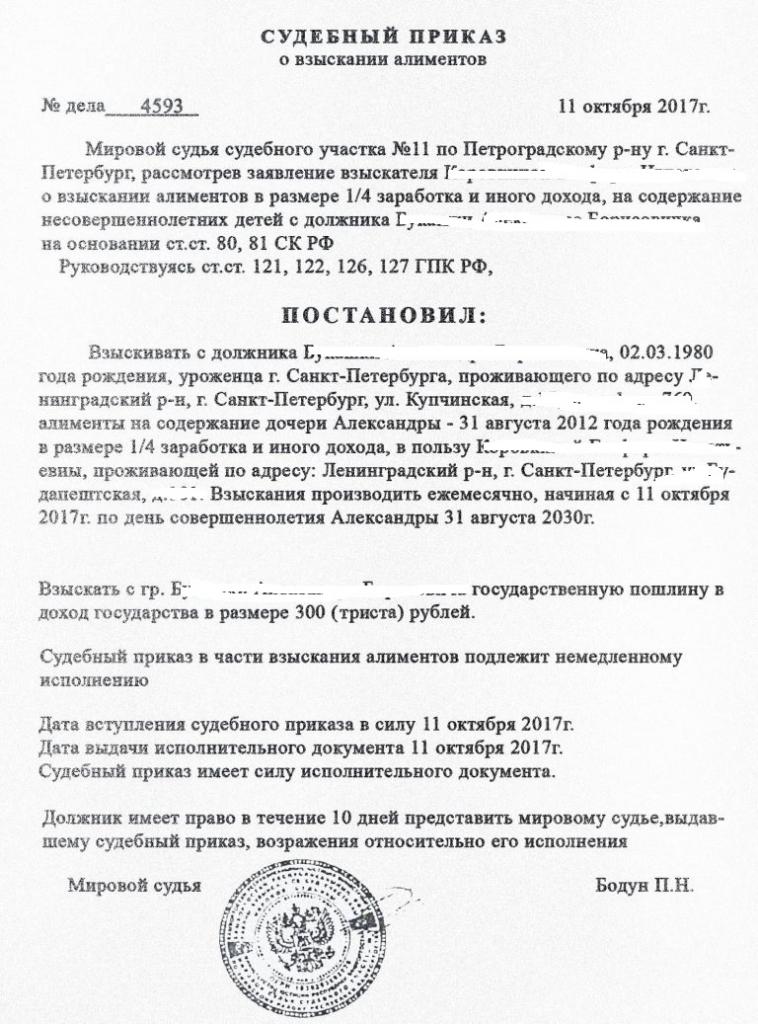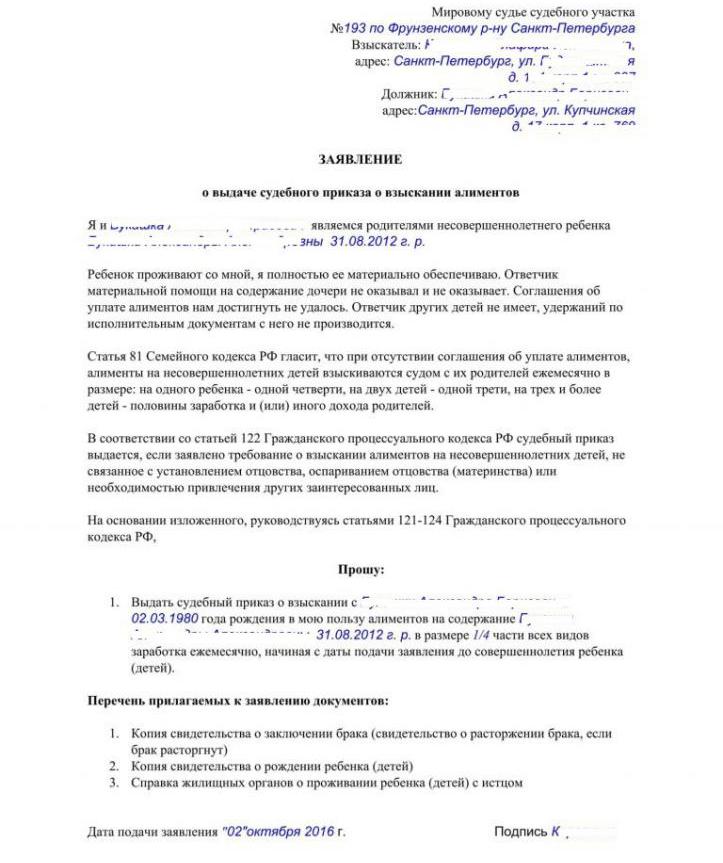The deadline for appealing against a court order should not be confused with the deadline for cancellation. Consider the features of the adoption procedure and the nuances of execution. How it is canceled and appealed. We will study aspects of compliance with procedural deadlines.
Normative regulation
Civil procedural law in the form of the Code of Civil Procedure describes:
- grounds for receiving an order;
- design rules;
- filing procedure;
- grounds for returning materials to the applicant;
- grounds for refusal to accept an order.

Order proceedings are a kind of simplified trial of simple cases in which there is no dispute about the law and it is only a matter of collecting debt.
Other rules of the Code, for example, on appeals, also apply to clerical proceedings. There are certain features of the review procedure. In particular, there is no appeal stage. The review is carried out by the board without the participation of the parties, but they are informed of the opening of the case and given time to provide additional information.
The clarifications of the rules of civil procedural law regarding the order given by the Supreme Court simplify their use.
Some nuances
An application for a court order shall be submitted:
- debt collection (an exhaustive list is given in Article 122 of the Code of Civil Procedure);
- recognition of ownership of things not related to real estate;
- the maximum amount of the recoverable amount or price of property is 500 thousand rubles;
- The indisputability of claims is affirmed (the defendant does not object to them).

Trying to get an order is often a step before filing a lawsuit to recover a debt. Having no information about the attempt to recover by filing an order, the judge will not accept the lawsuit.
Order Requirements
Here's what you need to specify:
- name of the court (indication of the number of the justice of the peace);
- F. I. O. of the claimant, his place of residence, full name of the organization, its location;
- F. I. O. debtor, place of residence, full name of the organization, its location;
- circumstances on which the requirement is based;
- a claim for the recovery of monetary amounts (a specific amount is indicated);
- a claim for the recovery of expenses for the payment of a duty;
- signature and filing date.
The representative of an individual or organization is required to attach a copy of the power of attorney.
Two sets of documents are attached (one for the judge, the other for the debtor). The duty is paid in the amount of 50% of the amount that would be paid when filing a claim.
The procedure for making
An application for the issuance of a court order shall be submitted to the court at the place of residence or location of the defendant. Documents confirming the validity of the requirements, receipt of payment of the duty shall be attached to the application.
The judge verifies compliance with the order of filing, execution and makes one of the following decisions:
- He agrees with the statement and makes a court order;
- refuses to accept the application for production (equates to a denial of claim);
- leaves it without consideration on the merits and returns the materials due to non-compliance with the design rules.
The latter option requires a new appeal to the court.
The parties are not summoned to the court, so all possible documents should be submitted.
Case study
For example, a court order to recover child support is a simplified form of a court decision:
- the case number, date and place of consideration are indicated;
- the number of the plot on which the justice of the peace works;
- who collects from whom (indicating F.I.O.) alimony in the amount of a share of income;
- reference to legislation;
- essence - to collect alimony in the amount of ¼ from the income of the debtor (F. I. O. and place of residence) in favor of (F. I. O., place of residence) for the maintenance of a son or daughter (F. I. O.);
- the date is set from which the collection period is calculated;
- the collection procedure is indicated (monthly);
- date of issue and entry into force (column remains in advance);
- the right to declare the cancellation of the order within 10 days of receipt of the documents is explained;
- Signature of the judge and seal.

Some features
Some judges indicate in the order the right of cassation appeal. However, this almost never occurs. On the one hand, they have no desire to disclose unnecessary opportunities to appeal their decisions, on the other hand, there is no confusion with the understanding by citizens of the cancellation procedure.
Execution of the order
A court order is an executive document, and there is no need to obtain a writ of execution and present it to the bailiff service.

The deadline for executing a court order is the same as for the rest of the documents - it lasts until the collection is over. If the debtor has neither property nor money, then the production closes after 3 years. Within 12 months after the bailiff closes the case, the recoverer has the right to file an application for its renewal if the debtor finds liquid property.
In the case of alimony, the execution period lasts until the right to receive it is lost or until the debt arising from it is recovered. Termination of the procedure due to lack of money or property in maintenance cases is not provided.
As a general rule, the right to appeal to the FSSP is valid for 3 years from the date of entry into force of the judicial act. In the case of alimony, the right to recovery is retained until the child reaches the age of 18. It is allowed to collect payments for no more than 3 years prior to applying for an order.
Improper performance of the obligation will lead to an increase in debt due to the accrual of interest.
Cancellation at the request of the debtor
An application for the cancellation of an order shall be submitted within 10 days after receipt of the documents by the debtor. The deadline for cancellation is also counted when the addressee evades receiving the letter. In this situation, its countdown is made from the moment of termination of storage of correspondence in the post office.

What to do if time is lost? The restoration of the terms of appeal of the court order in this situation is not applicable.
Along with this, the debtor is still entitled to submit an application for cancellation to the judge after the expiration of the 10-day period. He must explain the reasons why he did not submit the documents on time. Documents confirming their respect are attached to the explanatory note.
The circumstances that served as an obstacle should take place precisely in the period of time allotted for the filing of a request for cancellation.
The provision of explanations is also given 10 days from the moment when the circumstances that exclude the possibility of applying for cancellation have disappeared.
The judge has the right to agree with the arguments of the debtor and to cancel the earlier decision. Based on the results of the review, a determination is made either to cancel the order, or to satisfy the debtor's application.
Cassation appeal
Recent changes give a chance to cancel the order, which was issued in violation of the law, if the debtor either refused to file an application for cancellation, or for some other reason failed to do so.

Despite the features, the general principles for review are the same. The complaint is first passed to the judge, who decides whether it is acceptable for referral to the panel. If the decision is positive, the papers are transferred to the board for consideration on the merits.
What is the deadline for appealing a judicial order of a justice of the peace? The law gives 6 months to prepare a complaint and transfer it to court. Explanations give the right to send the paper directly to the cassation instance.It should be noted that a six-month period is set aside for both attempts to appeal, and the submission of a complaint to the court does not suspend the course of the term. However, due to the workload of the presidium of the court, the allotted time for filing a second cassation appeal may not be enough.
If time is missed again
The restoration of the term for cassation appeal of a court order is the competence of the court that made the decision in the first instance, i.e., the magistrate court. Without a determination made by this court, proceedings are essentially impossible.

If the papers are submitted already to the Supreme Court, the issue is already decided in this court. There is no need to contact the first instance again.
The reasons for such a request are:
- actions of the court, mail;
- serious illness;
- business trip, other circumstances that objectively prevented from going to court or negotiating with someone about representing interests.
A request for the restoration of the time limit for appealing against a court order shall be attached to the appeal for cancellation.
